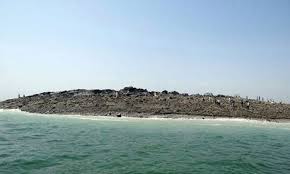
A major earthquake has killed at least 327 people and left thousands more injured and homeless in a remote region of southwestern Pakistan.
The Pakistani military said it was rushing troops and helicopters to Awaran district in Baluchistan province where the magnitude 7.7 quake struck on Tuesday afternoon.
The quake was felt as far away as New Delhi, the Indian capital, some 1,200 kilometers (about 740 miles) away, but no damage or injuries were immediately reported there.
In Pakistani cities such as Karachi along the Arabian Sea and Quetta, the capital of Baluchistan province, people ran into the streets in fear, praying for their lives when the quake hit.
Local officials said they were sending doctors, food and 1,000 tents for people who had nowhere to sleep as strong aftershocks continued to shake the region.
Most of the victims were killed when their houses collapsed. Pakistani television showed pictures of the area.
Walls of the mud brick houses had collapsed and people were gathered outside because they had no homes to sleep in.
Devastation: Baluchistan is Pakistan’s largest province but also the least populated and most impoverished. Awaran district has about 300,000 residents
Emergency response: Local officials said they were sending doctors, food and 1,000 tents for people who had nowhere to sleep as strong aftershocks continued to shake the region
Pakistani officials were investigating a small island that appeared off the coast of Pakistan after the quake, apparently the result of earth and mud pushed to the surface by the quake.
The head of the Geological Survey of Pakistan confirmed that the mass was created by the quake and said scientists were trying to determine how it happened.
Zahid Rafi said such masses are sometimes created by the movement of gases locked in the earth under the sea, pushing mud and earth up to the surface in something akin to a mud volcano.
‘When such a strong earthquake builds pressure, there is the likelihood of such islands emerging,’ he said. ‘That big shock beneath the earth causes a lot of disturbance.’
To get a better idea of what the island is made of and how permanent it is, scientists will have to get samples of the material to see if it’s mostly soft mud or rocks and harder material.
He said these types of islands can remain for a long time or eventually subside back into the ocean, depending on their makeup.
A Pakistani Navy team reached the island by midday Wednesday, navy geologist Mohammed Danish told the country’s Geo Television. He said the mass was about 60 feet (18 meters) high, 100 feet (30 meters) long and 250 feet (76 meters) wide.
‘There are stones and mud,’ he said, warning residents not to try to visit the island. ‘Gases are still emitting.’
But dozens of people had already visited the island, said the deputy commissioner of Gwadar district, Tufail Baloch, who traveled by boat himself to the island Wednesday morning.
Water bubbled along the edges of the island, in what appeared to be gas discharging from under the surface, Baloch said.
He said the area smelled of gas that caught fire when people lit cigarettes.
Dead fish floated on the water’s surface while local residents were visiting the island and taking stones as souvenirs, he added.
Such land masses have appeared before off Pakistan’s Makran coast, said Muhammed Arshad, a hydrographer with the navy. After quakes in 1999 and 2010, new land masses rose up along a different part of the coast about 282 kilometers (175 miles) east of Gwadar, he said.
He said each of those disappeared back into the sea within a year during the monsoon season, a period of heavy rain and wind that sweeps Pakistan every summer. He said that in the area where the island was created on Tuesday, the sea is only about six to seven meters (23 feet) deep.
Baluchistan is Pakistan’s largest province but also the least populated and most impoverished. Awaran district has about 300,000 residents.
Many residents are believed to be involved in smuggling fuel from Iran, while others harvest dates.
The area where the quake struck is at the center of an insurgency that Baluch separatists have been waging against the Pakistani government for years.
The separatists regularly attack Pakistani troops and symbols of the state, such as infrastructure projects.
Baluchistan and neighboring Iran are prone to earthquakes. A magnitude 7.8 quake centered just across the border in Iran killed at least 35 people in Pakistan last April.

